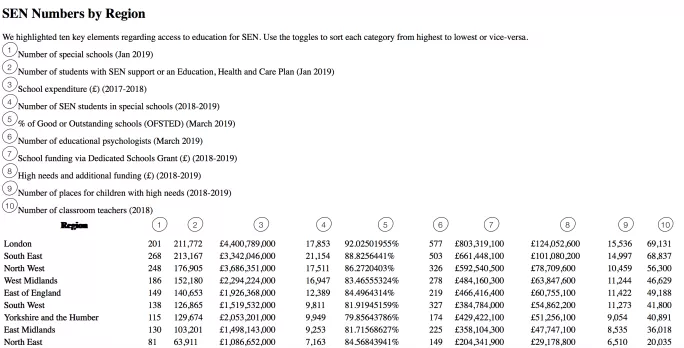The South East has the highest number of pupils with special educational needs and disabilities but got £20 million less in high-needs funding than London in 2018-19, according to a new report highlighting major regional disparities in SEND provision.
Figures published by specialist lawyers Bolt Burdon Kemp show that there were 213,167 school pupils with SEN support or an education, health and care plan (EHCP) last year in the South East of England.
This was higher than anywhere else in the country. In London, there were 211,772 pupils receiving SEN support or with an EHCP.
Report: Lack of SEND support failing a generation of pupils
SEND: Two-thirds of most recent inspections uncover failings
Controversy: Council boss claims too many children are applying for EHCPs
However, the report shows schools in the capital received almost £23 million more than the South East in high-needs funding for such pupils.
The figures for 2018-19 show that London received £124,052,600 while the South East received £101,080,200.
The report said the figures it has compiled, and a commentary from SEND expert Jules Daulby, paints a “stark picture of the SEN landscape in England”.
It notes that the proportion of pupils identified as having SEND has risen for the third consecutive year.
In January 2019, pupils with SEND represented 14.9 per cent of the overall student body, while the number was 14.6 per cent in 2018 and 14.4 per cent in 2017.
Ms Daulby said: “It’s hard to know if there are more children with SEN now, or whether the system is simply identifying needs better.”
But she also warned that some pupils with SEND could still be being missed as a result of reforms.
Children with SEND can now either receive SEN support in school or receive an EHCP, which is a legal document setting out a child’s health and education needs.
Ms Daulby said: “There are likely to be many children who used to be identified with SEN who aren’t now. SEN identification has gone from a five-stage risk classification to three stages and now to two: students who need SEN support and students who need an educational, health and care plan.
“As classifications change, children who previously had SEN support may find themselves being left by the wayside. How many children are currently unidentified within the overall SEN numbers due to these changes?”
She also warned that the current system of providing and applying for help and support for pupils with SEND was becoming adversarial.
The Commons Education Select Committee warned last year that a generation of children with SEND were not getting the support they need because of “a nightmare of bureaucracy, buck passing and confusion”.
Ms Daulby said: “From this report, it’s clear that the system has become more adversarial than ever.”
“What’s more,” she adds, “often the mantra in children’s services for intervention is ‘just enough, soon enough’ so families and children with SEN often don’t get help until crisis point has hit.
“If we are to have any chance of providing a better experience for families and children with SEN, we need to engage more closely with the families and teaching staff closest to the issue.”
The new report compares a series of figures including the number of pupils with SEND, the amount of funding schools receive and the number of high-needs places available in each government region in England.
Regional breakdown of SEND spending





